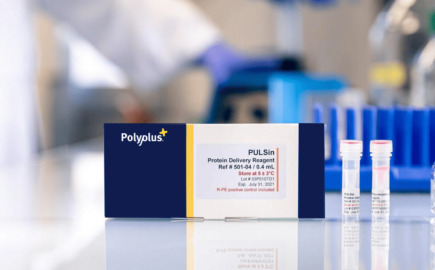The delivery of protein and antibody using PULSin® represents a powerful approach for functional studies in live cells.

We use cookies to help you navigate efficiently and perform certain functions. You will find detailed information about all cookies under each consent category below.
The cookies that are categorized as "Necessary" are stored on your browser as they are essential for enabling the basic functionalities of the site. ...
Necessary cookies are required to enable the basic features of this site, such as providing secure log-in or adjusting your consent preferences. These cookies do not store any personally identifiable data.
Functional cookies help perform certain functionalities like sharing the content of the website on social media platforms, collecting feedback, and other third-party features.
Analytical cookies are used to understand how visitors interact with the website. These cookies help provide information on metrics such as the number of visitors, bounce rate, traffic source, etc.
Advertisement cookies are used to provide visitors with customized advertisements based on the pages you visited previously and to analyze the effectiveness of the ad campaigns.
The intracellular delivery of proteins to live cells offers a powerful alternative as a scientific research tool where other approaches (DNA transfection, RNAi transfection) have failed. Protein delivery approach allows various experiments in live cells including studies of protein interference with blocking antibodies, live immunolabelling, protein-protein interactions, intracellular protein trafficking, protein phosphorylation states or regulation of transcriptional pathway and therefore artificial control of gene expression levels.
The intracellular delivery of purified proteins, antibodies and peptides to the cytoplasm and to the nucleus is naturally impeded by the cell membrane. In order to allow facilitated non-invasive delivery of such biomolecules, we have developed a potent carrier: PULSin®.
The mechanism of action is the following: the first step of intracellular delivery of biomolecules with PULSin® is the formation of non-covalent complexes between the biomolecules of interest and the delivery reagent. Complexes are subsequently internalized via cationic cell-adhesion receptors present on virtually all cells and are released into the cytoplasm where they disassemble. The native protein can thus diffuse throughout the cytoplasm and reach its target organelle to perform its biological function. The process is gentle to cells and delivers functional proteins. PULSin® delivers proteins to a large variety of live eukaryotic cells, including primary and suspension cells.